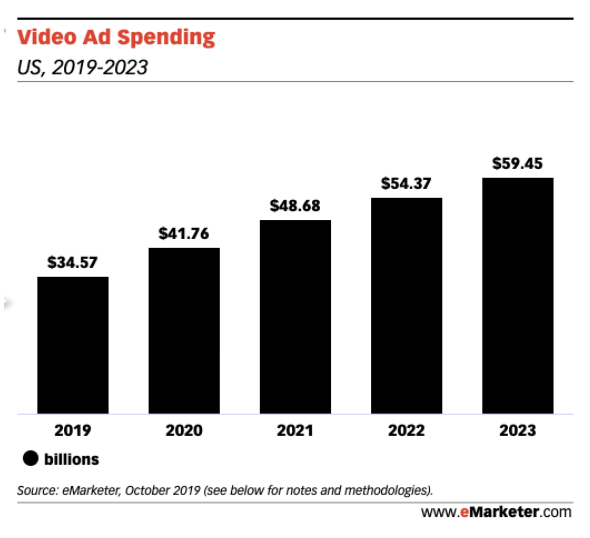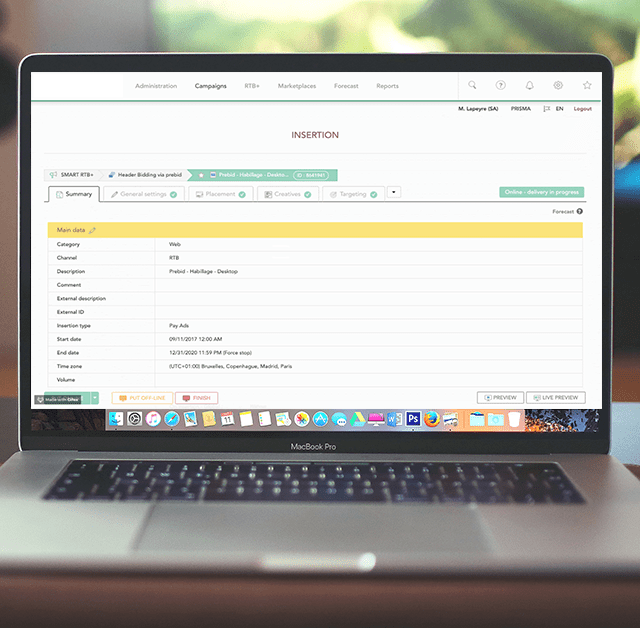Publishers, why not add your video inventory to your header bidding strategy?
You’ve most likely been hearing for years about header bidding in the advertising industry. This trend needs to be well understood by publishers, and if you don’t, feel free to check out our article “Header Bidding definitions made easy”. In this article, we’ll take a closer look at video header bidding and explain how it could represent a great opportunity to increase your header bidding inventory.
Before going into further details, we should mention that header bidding was created to allow publishers to send bid request to monetize their display inventory and to several demand sources before advertising calls are sent to their ad server. Why? Because DFP favoured Google Ad Exchange (AdX) bidding, rather than non-Google requests.
Since this revolution, header bidding has evolved significantly and video header bidding now represents a growing opportunity. A new process which makes it possible to capitalize on a growing phenomenon as illustrated by this graph on video advertising.

eMarketer.com: https://bit.ly/3ey0j0C
1 – What is Video Header Bidding?
The video header bidding solution (in-stream and out-stream) is aimed at publishers who wish to open their video inventory to more competition simultaneously (various demand sources). The end goal is to get rid of the classic waterfall methodology and its drawbacks, such as latencies or revenue losses. To avoid this, open your inventory to the video, it is easy! Header bidding, regardless of the ad format, works the same way for display or video, however implementation and set up are quite different.
While implementing header bidding for display is quite simple, it is a bit more complex for video. The complexity derives from a large number of video players relied on by publishers.
2 – How does it work?
But how does it work exactly? Let us explain. With video ads, the wrapper acts ahead of the impression that is sent to the ad server. The wrapper then simultaneously calls upon all the configured demand partners. Then all bidders send back their bidding price to the wrapper, which quite logically selects the highest bid.
Further in the process, the selected auction (the highest bid, remember) is then transferred to the publisher’s ad server and this while adding targeting keys to the auction information. The ad server evaluates all eligible line items and selects which ad server has a better line item than what he received from the wrapper.
What parameters does the ad server base its selection on? The ad servers take into account several characteristics of the campaign, first considering the previously configured priority, then the price.
3 – What are the various steps involved in video header bidding?
There are three main steps when implementing video header bidding:
- Start creating engaging, high-quality content to engage your audience. Consider presenting your content in multiple formats such as in-stream with a large player size or output video.
- Configure your auction header from a technical point of view in order to transmit all the parameters necessary in the bid request as explained above (player size, mime types, VPAID version, etc.)
- Confirm that the ads.txt file is active on all indirect monetization partners.
4 – Why you should implement video header bidding?
The benefits and drawbacks of video header bidding are very similar to those of display header bidding. With maybe even more advantages…
Benefits of Video Header Bidding:
1- Get the most out of every impression and maximize yield for publishers: header bidding improves publisher yield — no matter the format, by dismantling the waterfall. Consequently, the uplift in revenue will be higher.
2- Increase revenue with higher video CPM: the uplift could be even higher for video because video inventory is more scarce than display inventory, increasing competition and meaning a much higher CP.
3- Take back control: video header bidding allows publishers to offer their entire inventory to numerous demand sources at once. This way, publishers won’t be dependant on a single partner for their video monetization. That’s clearly safer for publisher business. Header bidding will create a fair competition between different sources and publisher revenue will be less affected in case of impactful partners’ decisions such as the ones we’ve seen in the past few years, especially in terms of transparency.
4- More and more demand partners are asking for programmatic in-stream video: display and out-stream video header bidding implementation are fully automated and very well managed by publishers and SSP. For in-stream video, the implementation is undeniably more complex, but many experts believe the market is shifting and different partners are now able to overcome the technical challenges related to in-stream video. As a consequence, demand is rising in programmatic.
5- In-stream video is a strategic positioning publisher should take now for the coming years: when we monitor in-stream video investment, we clearly notice that advertisers investments are growing from year to year, and this is a real opportunity for publishers.
In-stream video is a hot topic, especially in 2020, and a direction many publishers should be moving towards.
However, we have to keep in mind that implementing in-stream video header bidding is more complex than display and out-stream. So if you need more information on video header bidding, please check out our dedicated page or contact us.


